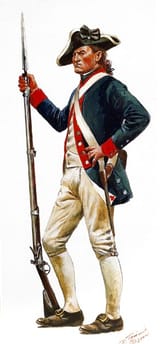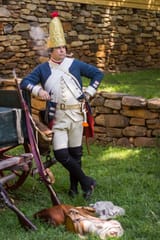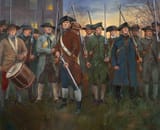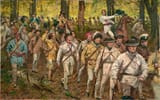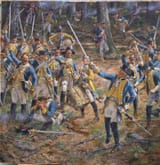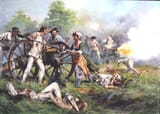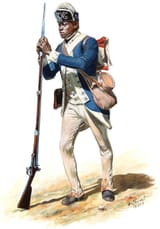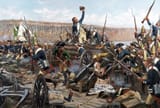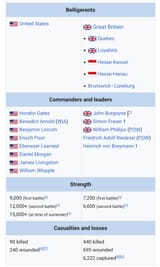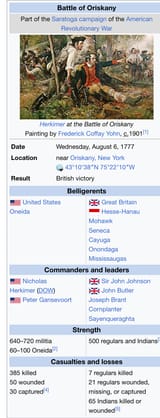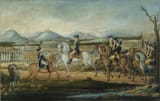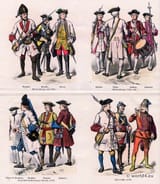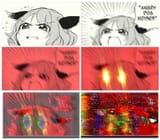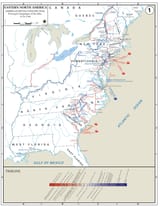>>63941967 (OP)
Sort of. Varied by time period.
1775: Lexington & Concord through Cambridge and Boston and Siege of Quebec: most soldiers wore civilian clothes in the beginning and were often armed with fowling pieces or muskets from wherever they could get them, and there were plenty of them. Civilian coats and jackets, knee breeches, small clothes, mix of other accoutrements dominated. Wool greatcoats, wool caps or hunting shirts and hunting frocks became far more common by 1776, especially for 9-month recruits.
1776: Hunting frocks and hunting shirts became a de facto standard, but many regiments formed in this time adopted different colors: blue coats faced red for NJ regiments, gray coats faced green for NY, brown faced red for Pennsylvania, or blue coats with buff facings. The winter of 1776-1777 saw the distribution of "lottery coats" of either blue with red facings or brown with red facings. Everyone liked the blue coats better, usually to distinguish from the British regulars in the field.
1777-1778: shortages plagued the army throughout the war, so some of the lottery coats became standard, but hunting shirts and frocks were common. usual kit included either a Brown Bess or Charleville musket, a bayonet and scabbard and frog, a black or brown leather cartridge box and white webbing, a canteen, a haversack, probably a blanket or simple camp gear, knee breeches and small clothes of white linen or wool, half-gaiters to keep your shoes on in the mud (unless you ate your shoes over the winter), a military cocked hat rather than civilian tricorn.
1779-1780: The Continental Army uniform regulations established blue with white facings for New England regiments, blue with red facings for Middle Atlantic regiments, and blue with buff facings for the Southern regiments. In practice, it rarely happened, and there were shortages all the way through.
1781+: Late war, it was mostly the same but with white long pants or "overalls."
